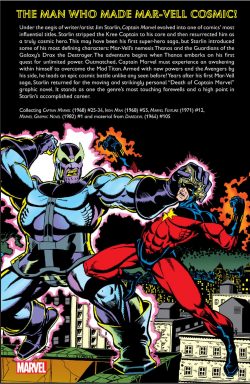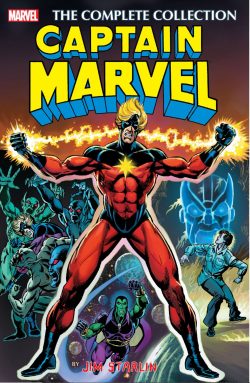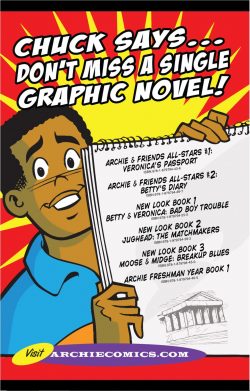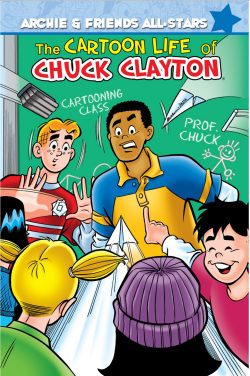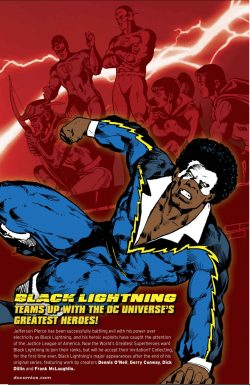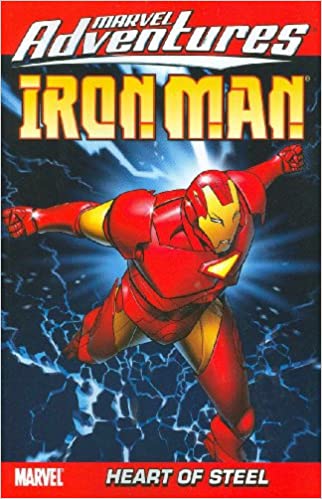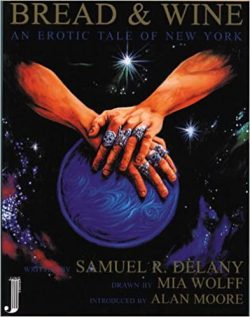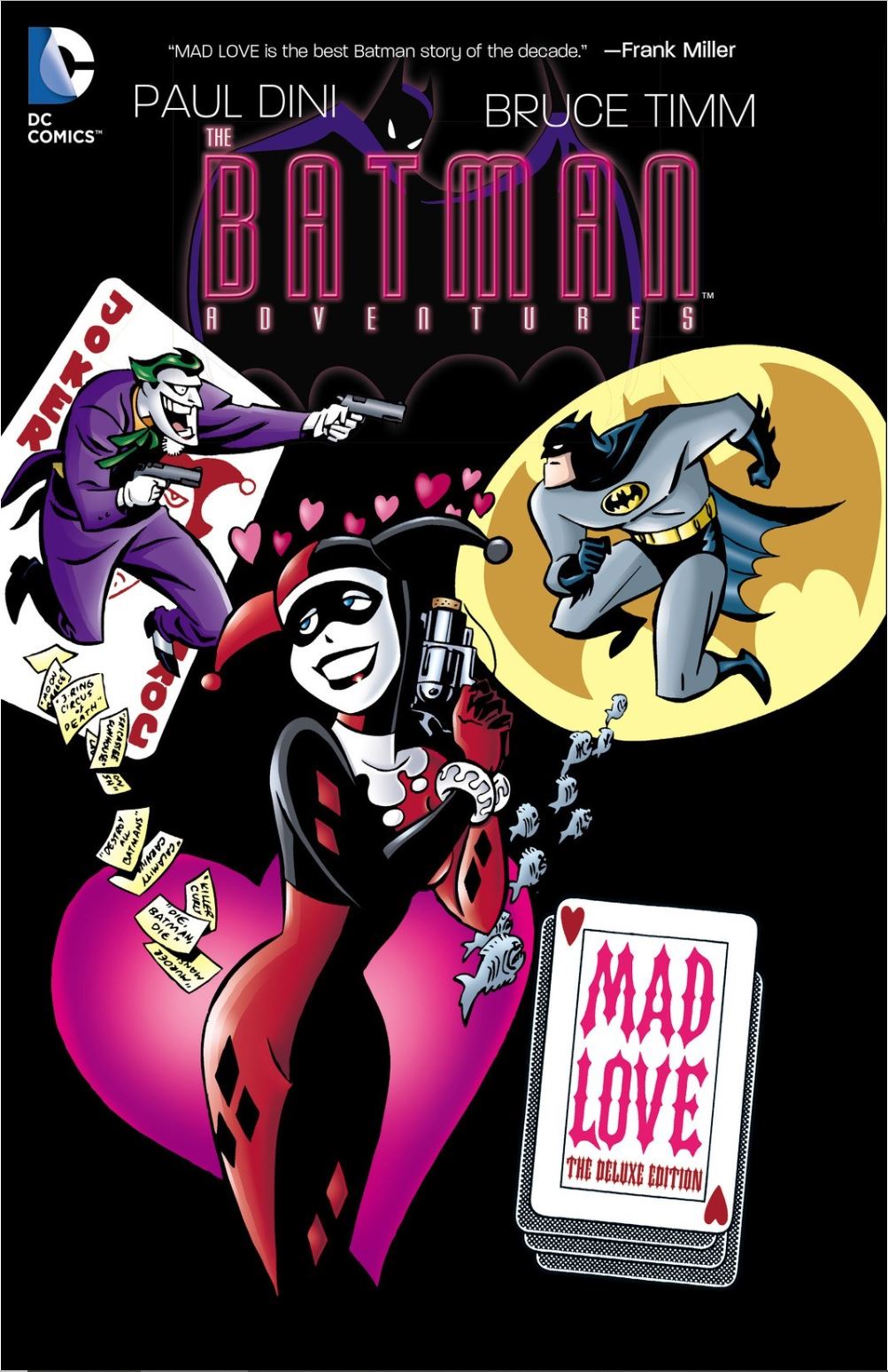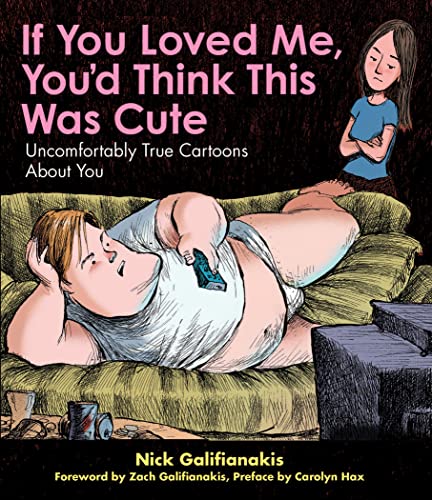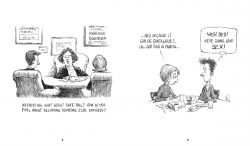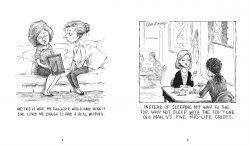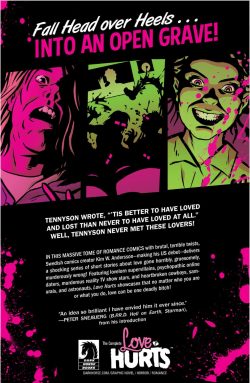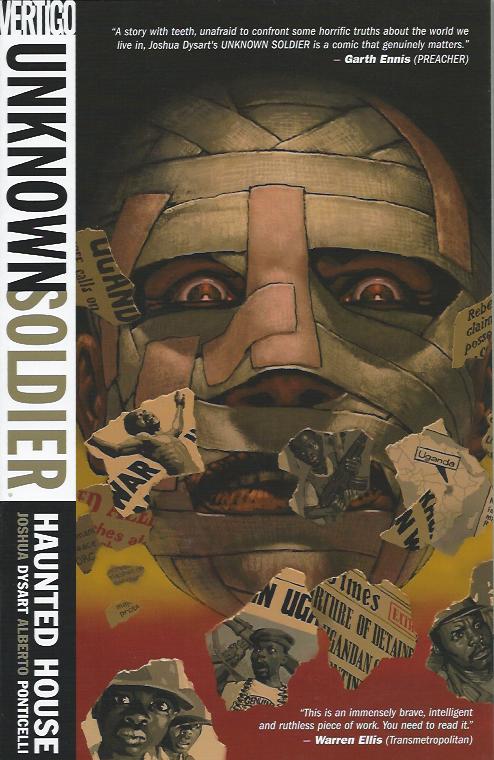
By Joshua Dysart, Alberto Ponticelli & various (DC/Vertigo)
ISBN: 978-1-4012-2311-3 (TPB)
One of the very best concepts ever devised for a war comic, The Unknown Soldier was actually a successful spin-off, having first appeared as a walk-on in a Robert Kanigher/Joe Kubert Sgt. Rock story (Our Army at War #168, cover-dated June 1966). He won his own series in 1970, beginning with Star-Spangled Comics #151, cover-dated July 1970 and an all-Kubert affair.
The timely interventionist was a faceless super-spy and master-of-disguise whose forebears had proudly fought and died in every American conflict since the birth of the nation. This family’s last son had dedicated himself to ensuring the safety of his nation in the face of outrageous aggression from the Nazis and Japanese, and specifically the death of his own older brother in an enemy sneak attack…
The war strip grew to be one of DC’s most popular and long-lived: Star-Spangled became The Unknown Soldier in 1977 and the comic only folded in 1982 with issue #268, when sales of traditional comic books were in severe decline.
Since then the character has resurfaced numerous times – in superhero guest-shots and as a 12-issue miniseries in 1988-9; a 4-part Vertigo tale in 1997 and this ferocious politically-charged contemporary reboot which surfaced as an ongoing series in 2009. Another iteration was later revived and unsuccessfully updated as part of the 2011 “New 52” project.
With each iteration the hero moved further and further away from the originating concept, but never truly abandoned or escaped it.
As reimagined by Joshua Dysart (Violent Messiahs, Swamp Thing, Hellboy: B.P.R.D., Conan, Harbinger, Bloodshot, Goodbye Paradise) for adult imprint Vertigo Comics, the action shifts to Uganda at the beginning of this century, where almost continual tribal unrest since the fall of Idi Amin had turned the nation into a charnel house.
Especially appalling were the actions of murderous fundamentalist Christian demagogue Joseph Kony: a self-professed prophet whose “Lord’s Resistance Army” kidnapped, pressganged and brainwashed children: making killers of boys and sex slaves of girls – all forcibly indoctrinated into his religion-cloaked armed insurgency. If you’re old enough, you’ll recall a time when his atrocities were never far from our news…
Here, Dysart and illustrator Alberto Ponticelli (Dial H for Hero, Frankenstein, Come un cane, Sam & Twitch, Blade II, Alias, Blatta) co-opt those headlines as basis for a shocking tale of barbarity and duplicity set in 2002 when noted pacifist, physician and award-winning humanitarian Dr. Moses Lwanga returned to the country of his birth after decades away.
A successful refugee from Amin’s lethal reign, he has been raised in America since he was seven. After benefitting from an Ivy League education at Harvard, he intends on doing good for his benighted former countrymen. The move has already paid wonderful dividends as his first explorations won him a wife in the form of equally-accomplished local doctor Sera Christian.
Now, having endured the painful rigmarole of fundraising and gladhanding even the most well-meaning of interested parties – such as “involved and concerned” humanitarian cause-driven actress Mrs Margaret Wells – Moses is more than ready to head in-country and save actual lives.
It’s a painful, frustrating task as it’s not just modern problems causing bloodshed and carnage. The country suffers from ancient grievances underlying everything else: caused by the colonial British bundling together disparate tribes and adjacent regions into one country. When they left, eternal differences between the southern Ganda/Buganda and northern Acholi Peoples fuelled much of the brutal ambitions of all those monstrous “leaders” seeking to fill the power vacuum…
Into this morass of murder and exploitation the Lwangas plunge, setting up a field hospital in Acholiland and trying their very best. They are keenly observed by many, especially journalist Momolu Sengendo and President Museveni’s highly ineffective Ugandan People’s Defense Force (UPDF), who are providing security for the facility which is deep in the region where Kony’s atrocities are daily occurring…
Apart from Sera, nobody is aware of the horrific, violent nightmares Moses endures nightly, and even she does not know how she figures in them…
Weeks later, the couple are struggling to cope with a continuous stream of mutilation, rape and punishment amputation cases caused by Lord’s Resistance Army units: largely autonomous groups spreading chaos and terror in the name of Jesus and Kony. One morning it all becomes too much. When a dying boy is brought in and reveals the LRA have taken his sister, Moses snaps and heads into the bush, outdistancing his extremely reluctant guards. He is easily captured and forced to watch children brutalise even younger children. Deep inside him, something breaks and a terrifyingly different man emerges: one as skilled in combat and death as Moses Lwanga is in healing…
When the smoke clears and the shooting stops, he’s subject to flashbacks of things that never happened, ongoing hallucinations and a voice in his head giving him orders…
Days later, a kind of rationality returns as he awakens with a ruined infected face swathed in bandages. They’ve been applied by an Australian nun, running a home for orphan girls in the middle of the worst place on Earth they could possibly be…
The famous doctor’s disappearance has caused dangerous waves in the outer world, and the press and the UPDF are frantically beating the bushes, but a much more measured approach is being taken by mysterious overseas interests. They have tasked the local CIA office to sort the problem and the ops on the ground “commission” – extort – veteran agent and drunken renegade Jack Lee Howl to find Moses at all costs…
The subject of all that interest is physically recovering at the convent school, but not so much in his head. That voice is telling him that neither he nor the children are safe and it’s backed up by increasingly agonising flashbacks and ever more daring insurgent forays.
Inevitably, the attack comes and broken child soldiers come looking for war brides, only to meet a force of murderous nature no amount of training could prepare them for…
Nevertheless, the bandaged terror fails and is captured by local LRA commander Lieutenant Lakut. A fanatical, remorseless monster, he recognises another when he sees one, and tries to break and recruit his captive. He would have been far wiser killing him right at the start…
As helpful-seeming old lag Howl probes Sera Lwanga for clues, in the bush Moses – or at least the passenger in his head – escapes and even more kids die as he tries to save the convent school residents, but another partial failure only tips him further way from the good man he wants to be…
By the time Howl finds him, Moses is having hallucinations – or are they recollections? – about another, far older killer with a bandaged face and no morality…
Ultimately, Moses battles his way back to Sera at an Internally Displaced Persons camp, only to lead Lakut to fresh victims. In the course of the massacre that follows, the doctor is lost to the soldier and in the aftermath of driving way the LRA, the bandaged man resolves that the only way to heal this infection is to hunt down and kill Joseph Kony himself…
To be continued…
A powerful and unforgettable tale of inhumanity made ever more shocking by its real world origins, this is a staggeringly potent comics tale long overdue for further attention. This initial tome – still cruelly out of print and unavailable digitally – was coloured by Oscar Celestini and lettered by Clem Robins, and features a variant cover by Rich Corben, augmenting regular covers by Igor Kordey whose image for US #1 won the Glyph Comics Award for Cover of the Year.
Dark, brooding, painfully true, Haunted House is a book worthy of your time and deserving of everyone’s attention.
© 2008, 2009 DC Comics. All Rights Reserved.

